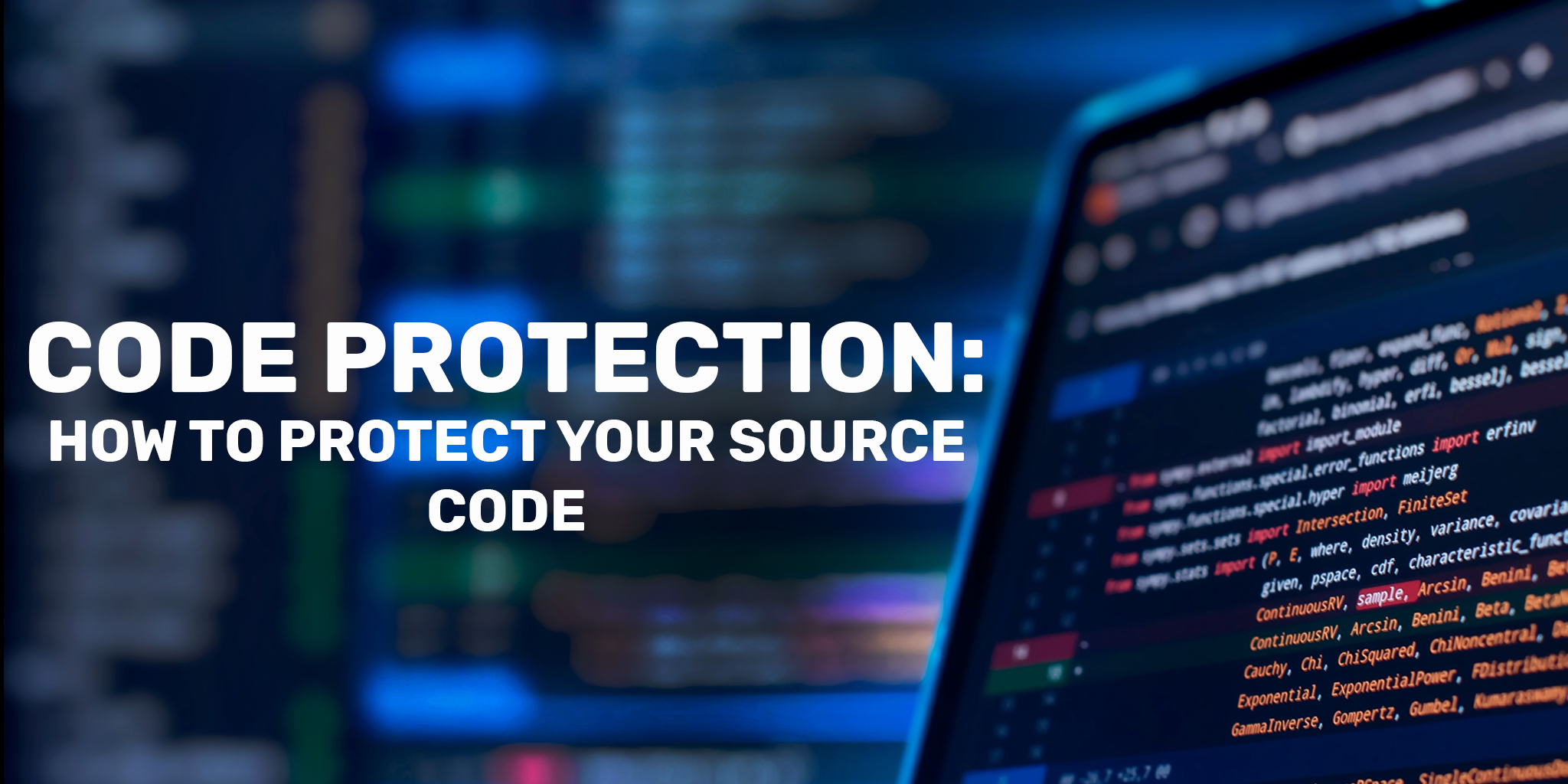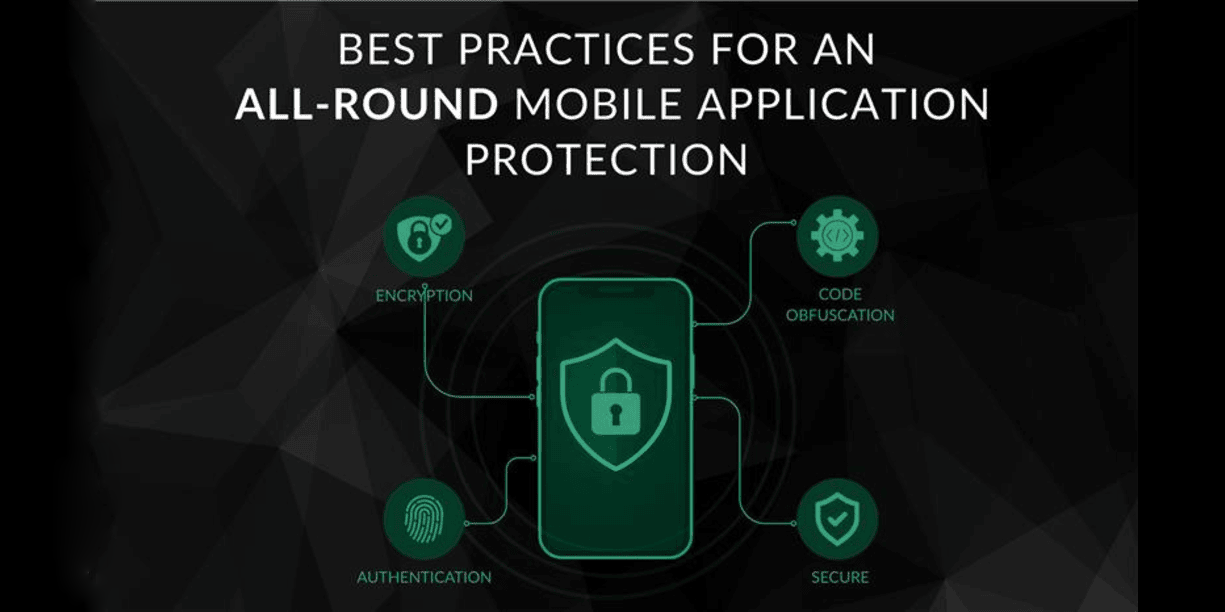Code protection describes the tactics and procedures used to protect source code from theft, unauthorized access, and misuse. Source code is the most important intellectual property of the digital era. One should safeguard proprietary source code through methods involving data governance about obfuscation, encryption, environmental inspection, and policy.
How to Protect your source code:
Protection of code includes the process and methodology involved in keeping the source code safe from theft, unauthorised access, or misuse. These protection strategies of code include software tools that obscure or encrypt the code, storage in secure restricted-access repositories, vigilance concerning possible security flaws, and relevant legal strategies involving copyright, patents, and particular license agreements that protect intellectual property rights.
Code protection is essential to ensure the security and integrity of software applications and, therefore, the proprietary know-how or technology of a company.
Why is code protection necessary?
Code protection is an important component of any corporate software development security plan. It will help the business safeguard its valuable assets, maintain the trustworthiness and integrity of its software, and retain the customers’ trust. Besides that, there are several other reasons code protection needs to be ensured
Safeguard Intellectual Property: A software development company’s source code frequently makes up its most valuable intellectual property. It has special algorithms procedures and strategies that provide the business a competitive edge. Competitors may copy or steal this code and use it to create their version of the software, which would cost them money and market share.
Prevent Software Piracy: If code does not protect software, then it can be easily accessed, used, and changed illegally. Obscuring or encrypting the code will prevent software piracy by giving credit to the authors and developers and having the benefits paid off with their contributions.
Avoid Malware Exploits: Some gaps in source code may be used by hackers to exploit software or gain other points of cyberattacks. Methods of code protection work to prevent such vulnerabilities by making it harder for bad actors to read and understand, let alone edit the code.
Preserve Application stability: Preserving source code can also lead to the stability of the program. Unauthorised changes in code may result in a terrible user experience by introducing bugs, crashes, and unpredictable behaviour.
Ensure Data Privacy: Security and privacy of the data of users may be compromised if sensitive data such as API keys, encryption keys, credentials, etc., are stolen from the source code. Protecting code includes methods for protecting such sensitive information.
Legal requirements: Organisations in certain industries are legally bound to establish code protection processes and procedures to prevent breaches. This includes industries dealing with sensitive information, such as health and finance.
How Data Loss Prevention Tools Can Help You Protect Code?
The following can be done as a way of securing your source code:
Sensitive Data Identification: DLP systems are tasked with keeping tabs on system data to prevent them from leaving your company’s network. This involves the identification of sensitive content, such as proprietary source code and intellectual property.
Establishing and Enforcing Policies: DLP tools can be employed to establish profound policies governing who can access the source codes from where, and at what time. It allows rules to be set up according to user, location, and type of data regarding code access and sharing.
Tracking and Preventing Unauthorised Behaviour: DLP solutions monitor and log every activity of your source code. The DLP solution will then block immediately any attempt to transfer or copy your source code outside those approved domains and will alert administrators to that fact.
Data Encryption: More advanced DLP technologies can encrypt data, which may protect your source code from unauthorised eyes by rendering it unreadable for unauthorised users at the time of sharing or storage.
Frequent Scans: The DLP systems can scan regularly and detect repositories containing sensitive source codes and take appropriate action in case of disparities.
Incident Response: In the case of attempted policy violations with your source code, DLP systems can provide ways to respond to incidents immediately.
Integration: Many DLP solutions defend source code in layers by integrating with other security technologies.
Training and Awareness: Many DLP solutions make training materials available to staff and developers so that they may be trained in the importance of code security and best practices in handling sensitive information. Generally, DLP systems adopt a structured approach toward source code protection by monitoring active data, preventing unauthorised handling of data, ensuring data governance, and responding to potential disclosure of data.
The risks that source code may pose when code protection is breached include the following:
Buffer Overflows: Buffer overflow is a problem wherein the program attempts to write data beyond pre-allocated fixed-length buffers. This might lead to crashed and erroneous data behaviour, which would allow an attacker to inject malicious code.
Injection Flaws: This involves software weaknesses whereby a user can inject some code into the program to alter the execution of the program. The most common example is SQL injection, where a hacker takes advantage of modifying database queries by entering SQL code.
Cross-Site Scripting (XSS): It is the result of software allowing unfiltered user input to be used in generating output, such as web pages. This results in allowing an attacker to inject and execute malicious programs in the user’s browser.
Cross-Site Request Forgery (CSRF): The CSRF is an attack that exploits confidence in a site to deceive the victim into sending a request with malicious intent. A file or database key reference made public without the necessary authorisation checks is an insecure direct object reference.
Misconfiguration: This is when the security settings have been set up, implemented, and updated as default. Due to this, private information or features may be accessed by hackers.
Unvalidated Redirects and Forwards: Assaulters can carry out forwards to obtain access to unapproved pages or even redirect victims to phishing or malware sites without appropriate validation.
Security Misconfiguration: This includes insufficient security configuration, insecure default settings, unencrypted cloud storage, incorrect or missing security HTTP headers, enabling features not in use, and so on.
Disclosure of Sensitive Information: It involves exposure via source code, credit card numbers, passwords, medical records, and personal information.
Usage of Known Vulnerable Components: Software is built using many third-party components. These may be very vulnerable unless properly updated and configured.
These are just a few of many examples. The risks mentioned above are often identified and counter-balanced through Static Application Security Testing, or SAST; Dynamic Application Security Testing, or DAST; tools and processes; and through penetration testing.
Security Best Practices for Code Protection
Safe Coding Procedures: The first line of defence is always secure coding practices and source code security best practices. Examples include blocking common coding mistakes, such as buffer overflows and SQL injection problems. Perform periodic code reviews to aid in finding bugs and security concerns before releasing the code.
Utilising Security Frameworks and Libraries: Most security-related errors could be avoided by employing security libraries and frameworks that have many security features built.
Static Code Analysis: Leverage automated technologies and analyse source code for vulnerabilities in data, such as cross-site scripting and SQL injection, before those become an attack vector.
Dynamic Code Analysis: Utilise automated techniques and tools able to analyse code while running in operation to assist in finding critical security vulnerabilities in operational programs.
Least Privilege Principle: Reduce the potential damage of security vulnerabilities by minimising the level of privileges that applications operate with. Always sanitise and validate every piece of data supplied by the user. Since this is one of the most common reasons for finding vulnerabilities, you mustn’t ever trust data that hasn’t been validated.
Vulnerabilities in patches: Keep updating your software dependencies regularly, and when found, fix the vulnerability as soon as possible.
Encrypt All Sensitive Information: In case some information is flowing that might get intercepted to make it unreadable, encrypt it. Periodically do key rotations using good encryption techniques.
Secure Authentication and Session Management: Use the security functionality inherent in the frameworks to do secure authentication and session management when handling user sessions.
Training Developers: Training developers in secure coding best practices will give them a better general understanding of the types of security risks to expect and how to protect against them.
Secured Code Repository: The code should be kept safe from unwanted access and modification by using secured code repositories that have the appropriate access rules set up accordingly.
Testing: This involves regular penetration testing to locate and identify system code and general architecture vulnerabilities.
Reaction Strategy: Create an action plan in response to the detection of a security incident. This would include non-technical events, like reporting appropriate parties of the breach, and technical aspects also, such as how to fix and mitigate the event.
How Quixxi Can Assist with Source Code Security?
Quixxi offers following two features to prevent understanding of source code by decompiling the application.
- Obfuscation – Quixxi will rename class names, packages, method names with random characters – this will reduce the understanding of the code with the name of the class and methods.
- Hard coded string encryption – Remove the hard coded strings present in the application and move them to native layer. A method call will be added to dynamically load the string on runtime.
- ResString encryption – Quixxi will encrypt the strings stored on the strings.xml file. Strings used in the java code are encrypted. A method call will be added to decrypt the string at runtime.






